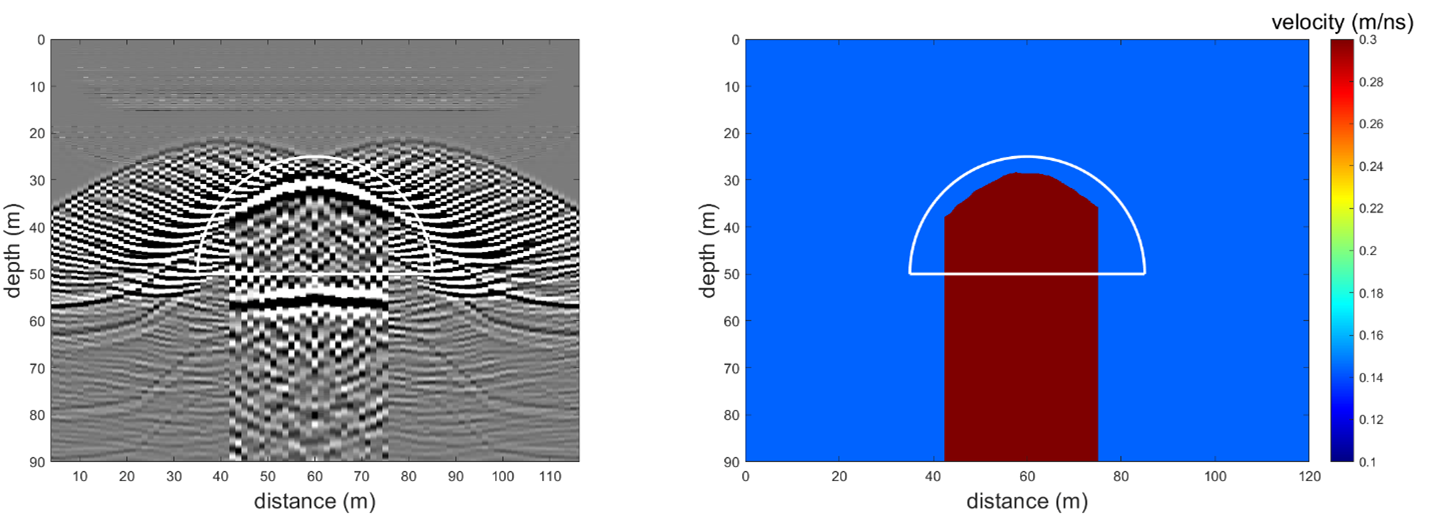
John Coonan
University of South Florida
Illustrating the Benefits of Coincident GPR and Seismic Data Acquisition for Shallow Lunar Exploration with a Simple Synthetic Case Study
Both seismic and GPR methods have been used separately to image velocities of geophysical waves and layering in the shallow lunar subsurface, but uncertainties persist when interpreting both types of data. We attempted to illustrate the potential benefits of coincident GPR and seismic data acquisition by numerically modelling the propagation of both active-source seismic and multi-offset GPR waves through a synthetic geometry consisting of a half-cylindrical, vacuum-filled void within a solid rock medium. Migrating these datasets sequentially allowed us to construct an improved velocity model compared to either method separately. Re-migration of the GPR data using the new velocity model correctly resolved the vertical extent of the void and improved resolution of the geometry of the tube floor.

Left: Migrated GPR data using 2D velocity model constructed from picked ceiling depths and re-interpreted as void. Right: 2D GPR velocity model re-interpreted following analysis of both migrated GPR and seismic datasets. True void dimensions are outlined in white.